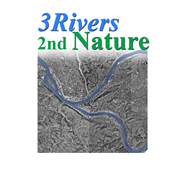Home> River Research> Monongahela River> Geology
Riverbank Geology Conditions and Access
Roman G. Kyshakevych, Ph.D. | Henry S. Prellwitz, Ph.D.
The intent of the study was to describe and document conditions of riverbank geology, accessibility, preservation, and restoration potential along the Monongahela and Youghiogheny Rivers in Pools 2 and 3, Allegheny County, Pennsylvania.
- Three different cases of riverbank access were generated-no access, moderate access, and easy access-by looking at the slope and composition of both of the bank and the berm.
- Three different grades of riverbank preservation were created,-best preservation, moderate preservation, poor preservation.
- The restoration potential is contingent on bank height (and potential floodplain affect) as well as soil composition.
Overview of Riverbank materials both natural an manmade:
- Man-made bank materials in the four major rivers are predominated by rubble/fill, which was used for railroad right-of-way construction.
- The average ratio for the riverbanks of the Monongahela, Allegheny, and Ohio Rivers is about 27% natural material, and 73% man-made.
- The Monongahela River has a much higher percentage of slag in the riverbanks, compared to the other three rivers due to the steelmaking that was the major industry in the Monongahela Valley.
- Natural material concentrations for the Monongahela River banks increase upstream, due to less impact from past heavy industrial activity
- The Youghiogheny has a very high percentage of rubble/fill,from railroad construction.
- The Youghiogheny has 65% natural material, and 35% man-made bank material; this trend is due to the relatively light industrialization and poor navigability compared to the three major rivers.


